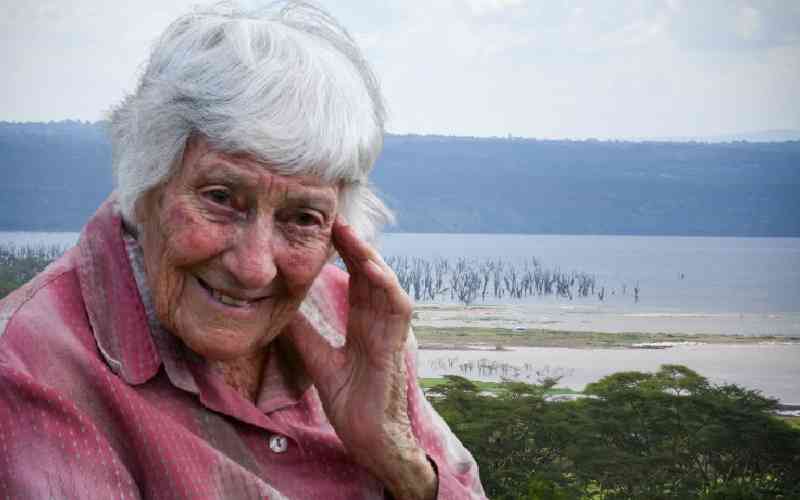
Nakuru, Kenya: Where we choose to spend our vacation time says a lot about what we value. Despite—or perhaps because of—what the World Tourism Organization calls "global economic challenges," more travellers are hitting the road than ever.
Off late Lake Nakuru National Park has become the preferred destination for both local and international tourist because of its strategic location and affordability.
The park is a must for your central tour of the Great Rift Valley. According to the Park's Senior Warden-Dickson Ritan, Lake Nakuru National Park has gained global recognition as an ecologically significant region having been named a Ramsar site and a bird's paradise.
Last week when we toured the park in the company of local tour operators, the lake was swollen- it's rising water levels covering most of the ground- but the shore of the lake were still dotted with the pink tone of flamingos that were joined by pelicans, herons, storks and other wading birds.
Overhead, one could see the distinct brown, black, white and bright yellow coloration of an African fish eagle looking for meaty carcass of flamingos while gliding on wings that span six to eight feet.
One of the most colourful birds at the park is the African pygmy kingfisher. As one of the smallest in the kingfisher family, this little insect-eating bird is about five inches long, but the brilliant plumage more than makes up for the small size.
As we explored beyond the lake, we came across a world of forest dwellers, plains game and other creatures – large and small.
Three species, though, have found the greatest solace at Lake Nakuru, and these animals are the reason that you will see an electrified fence around the park.
The white and black rhinos, as well as the Rothschild's giraffes that you see in the park have been rescued from the threat of poaching in other areas of Africa and also Kenya.
As we criss-crossed the park along the well-maintained all weather roads, our crew came across the most sought after and elusive predator at the park- the leopard.
Although demanding to locate, these spotted carnivores are most often found lounging in the trees of the acacia forests that are set back from the shores of the lake.
The game drive took us into the woodlands where we were able to catch sight of the Columbus and velvet monkeys.
But as you enjoy watching these primates, be careful not to stand under them as they are known to be quite messy eaters, a habit that helps propagate the forest trees and vegetation.
Thomson's gazelles, impalas, Grant's gazelles, waterbucks, reedbucks, buffalos and hippos are just some of the other herbivores found in the park.
Stay informed. Subscribe to our newsletter
Keeping a constant watch over some of these prey animals are striped hyenas, lions, the rare wild cats, golden cats and other highly elusive predators.
After the game drive we relaxed at Lake Nakuru Sopa Lodge- one of the three lodges within the park.
The management of Sopa Lodges, who had organized the tour, allowed the group to relax at their newly established hotel overlooking Lake Nakuru.
Sopa Lodge is strategically located on a range of hills that form the western limits of Africa's Great Rift Valley; the lodge offers spectacular views of the entire lake.
With 62 exclusive rooms-all with a stunning full view of Lake Nakuru, Sopa Lodge is set against the natural beauty of the wooded and bushy grassland of the national park.
At the lodge, one cannot not miss the spectacular views over the vastness of the park that boost -a wide ecological diversity and characteristic habitat that range from the lake waters to the escapement and ridges.
"This view is stunning," says my colleague as he clicks away his camera to capture the surrounding of the park from the verandah of the Sopa Lodge's dining hall- where we sat for a late lunch with a group of tour operators who were visiting the hotel for the first time.
The Sopa Lodge is the latest of the three lodges located within the National Park that is famous for its flamingos and a paradise for bird watchers and wildlife lovers alike.
The lodge gives you a place to breath. Patchy mobile phone coverage and the sense of isolation allow you to unwind to a slower pace set by the landscape and water-covered surface of the lake that occupies about a third of the park.
The lodge's signature experiences include a full view of the sunset and sunrise in the comfort of your room; full view of the lake-dotted with the pink birds and a tour guide of the park that is home to the black and white rhinos.
Afterwards, waiters greet guests with chilled champagne. At the lodge's restaurant, you can watch sun set from white linen clad dining tables while dining on a three-course dinner made with seasonal produce and fused with traditional elements from the local culture.
After dinner, guests gather around the flickering light of the fire pit, set on a large sweeping outdoor deck, sharing stories about their travels as they sip a glass of fine wine or a drink of your choice from the main bar- also overlooking the lake.
Lodge's General Manager Harrison Maina, an experienced hand in the hotel industry and has worked in over five countries, boosts of a facility whose location leaves guest with the best experience Lake Nakuru National Park has to offer.
"The location of Sopa Lodge is something that leaves one with the real experience of being at Lake Nakuru National park because of the picturesque view of the lake from up here," he says.
An interaction with the lodge's friendly, professional and knowledgeable staff leaves one dazzled with their passion about travel-from the mangers down to the supporting staff- they understand what your concerns are before you even voice them and get what goes into an unforgettable style at the facility.
The staff here is always happy to chat if you'd like help in finding about the birds the park or simply want to ask a quick question.
A tour guide at the Lodge, I only identified as Peter, amazed me with his knowledge about the park when he offers to give the reason behind colour of the lake.
"The lake water supports a dense bloom of the blue-green Cyanophyte Spirulina platensis from which it derives its colour and which is the major food source for the flamingo." He explained as we marvelled at the spectacular view.
From the hotel one cannot miss the notice the alkaline swamps with areas of sedge, Cyprus laevigatus and typha marsh along the river inflows and springs –flowing into the lake.
The surrounding areas around the lodge support a dry transitional savanna with lake margin grasslands of salt grass moving into grasslands of rhodes grass Chloris gayana in the lower areas.'
Besides the spectacular view Sopa Lodge has to offers; the management offers nature walks, outdoor dining, swimming pool, baby sitting and facilities for weddings.
Finally Maina says their rates are affordable for domestic tourists and soon they will start offering conference facilities.
 The Standard Group Plc is a
multi-media organization with investments in media platforms spanning newspaper
print operations, television, radio broadcasting, digital and online services. The
Standard Group is recognized as a leading multi-media house in Kenya with a key
influence in matters of national and international interest.
The Standard Group Plc is a
multi-media organization with investments in media platforms spanning newspaper
print operations, television, radio broadcasting, digital and online services. The
Standard Group is recognized as a leading multi-media house in Kenya with a key
influence in matters of national and international interest.
 The Standard Group Plc is a
multi-media organization with investments in media platforms spanning newspaper
print operations, television, radio broadcasting, digital and online services. The
Standard Group is recognized as a leading multi-media house in Kenya with a key
influence in matters of national and international interest.
The Standard Group Plc is a
multi-media organization with investments in media platforms spanning newspaper
print operations, television, radio broadcasting, digital and online services. The
Standard Group is recognized as a leading multi-media house in Kenya with a key
influence in matters of national and international interest.










